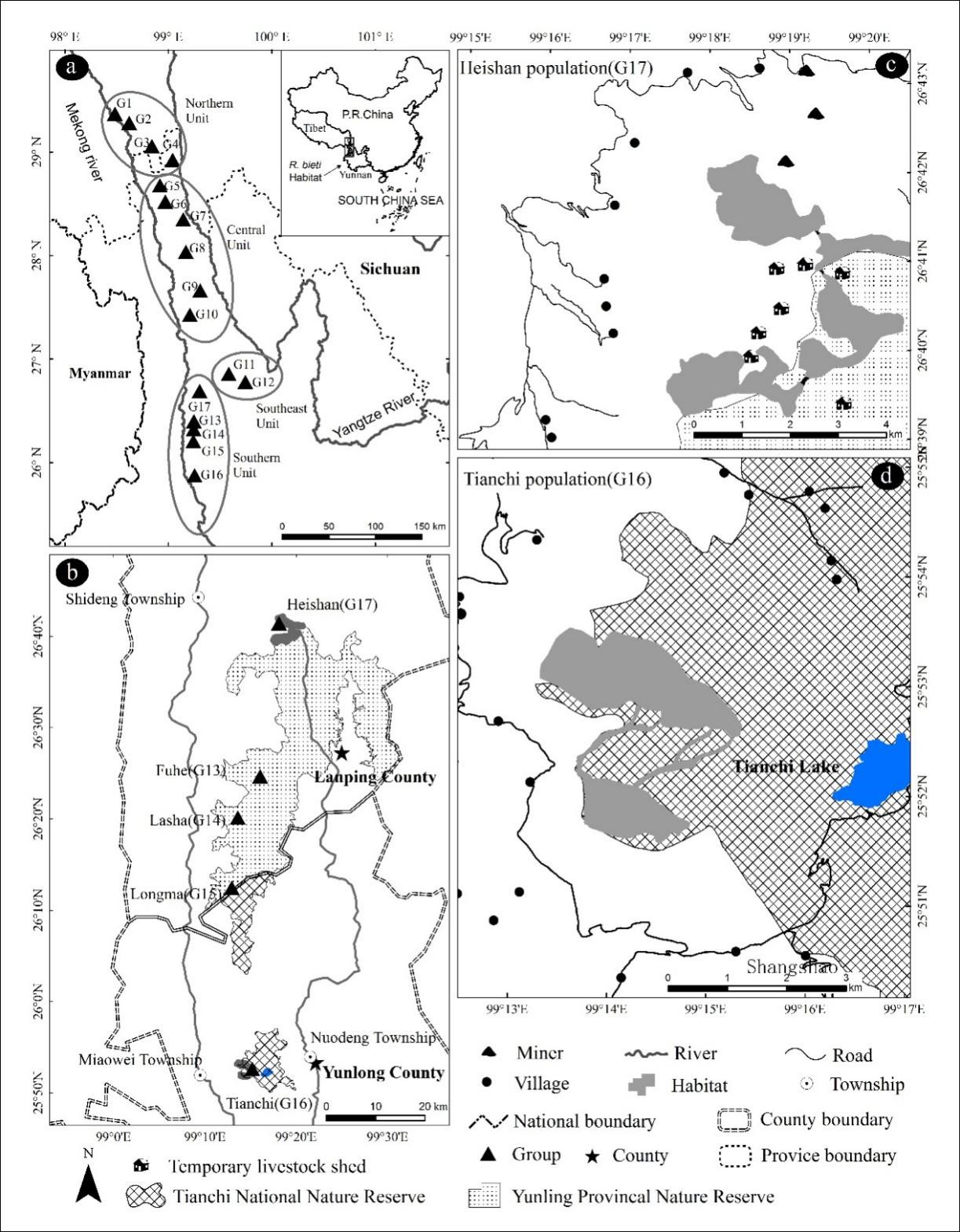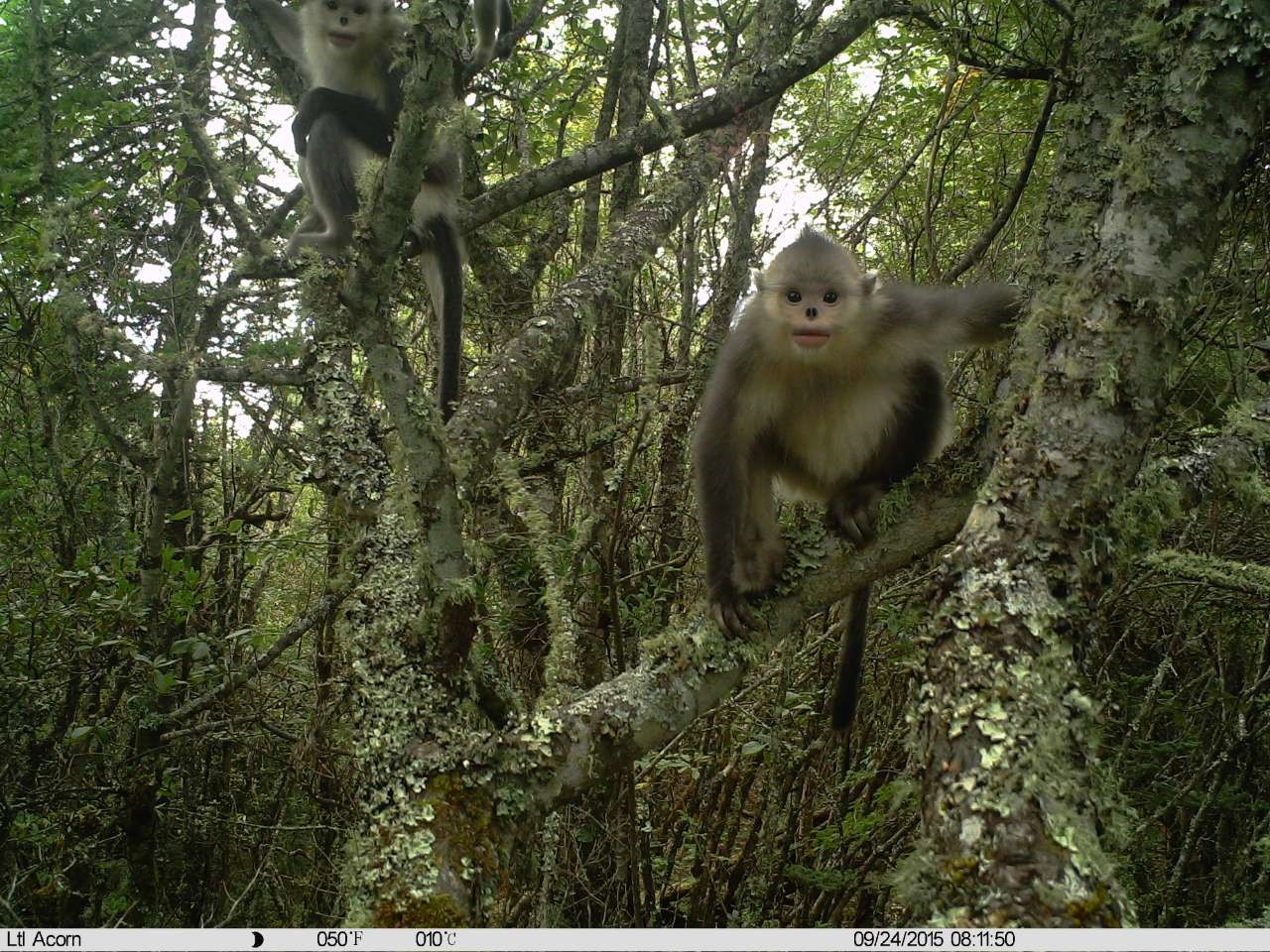The Black-and-white snub-nosed monkeys (Rhinopithecus bieti) is one of the primates habiting in the highest elevation mountains area. Who is endemic to China as a national Class I key protected wildlife and endangered species IUCN Red List, distributed in Yunling Mountains between the Mekong River and Yangtze River in Tibet and Yunnan, China. There are 20 groups, about 3500 individuals have not been reported. Five geographic unit groups were identified according to genetic data from 15 groups, which suffer from severe habitat fragmentation and loss. Currently, the Southern geographic unit group including three groups (Longma, Lasha, Changyan) with a high risk of extinction, and the southernmost group of Rhinopithecus bieti is Longmashan group in Yunnan Yunlong Tianchi National Nature Reserve in Yunnan, China. To understand the population status and conservation in the southern geographic unit group, one Ph.D. candidate Wang Hao-Han from the Institute of Eastern-Himalaya Biodiversity Research conducted a survey using a 3-dimension map-based interview Survey (3DIS) method, and field survey from October 2013 to February 2018 in the area of southern range of this species. New group of Rhinopithecus bieti were found in the south of Yunlong Tianchi National Nature Reserve during the investigation, and one group were rediscovered. The new group were named Tichi group, about 20 individuals. The rediscovered group is Heishan group beside Yunling Provincial nature reserve, it’ group size is about 30 individuals. This findings improved the groups and conservation status in the southern geographic unit from 3 groups to 5 groups. Especially, Newly discovery of Tianchi extends the range of Rhinopithecus bieti 40km to southwards, which indicate we have much area and more group to protect in the southern geographic unit. However, the five monkey groups in the southern geographic unit were isolated from each other, because of severe habitat fragmentation and loss. The newly discovered group and the rediscovered group are heavily threatened by human disturbance, and they are vulnerable to extinction due to low group size. We suggested strengthening monitoring, research, and protection management of this two monkey groups in the southern geographic unit of Rhinopithecus bieti, and much attention should be pay on their conservation status. Moreover, Project focus on habitat fragmentation and habitat disturbance of the southern geographic unit will be benefit of recovery of the corridor between groups. As a result, we hope to make a demonstration of primate conservation in fragmentation habitat in China.  (source:admin) |